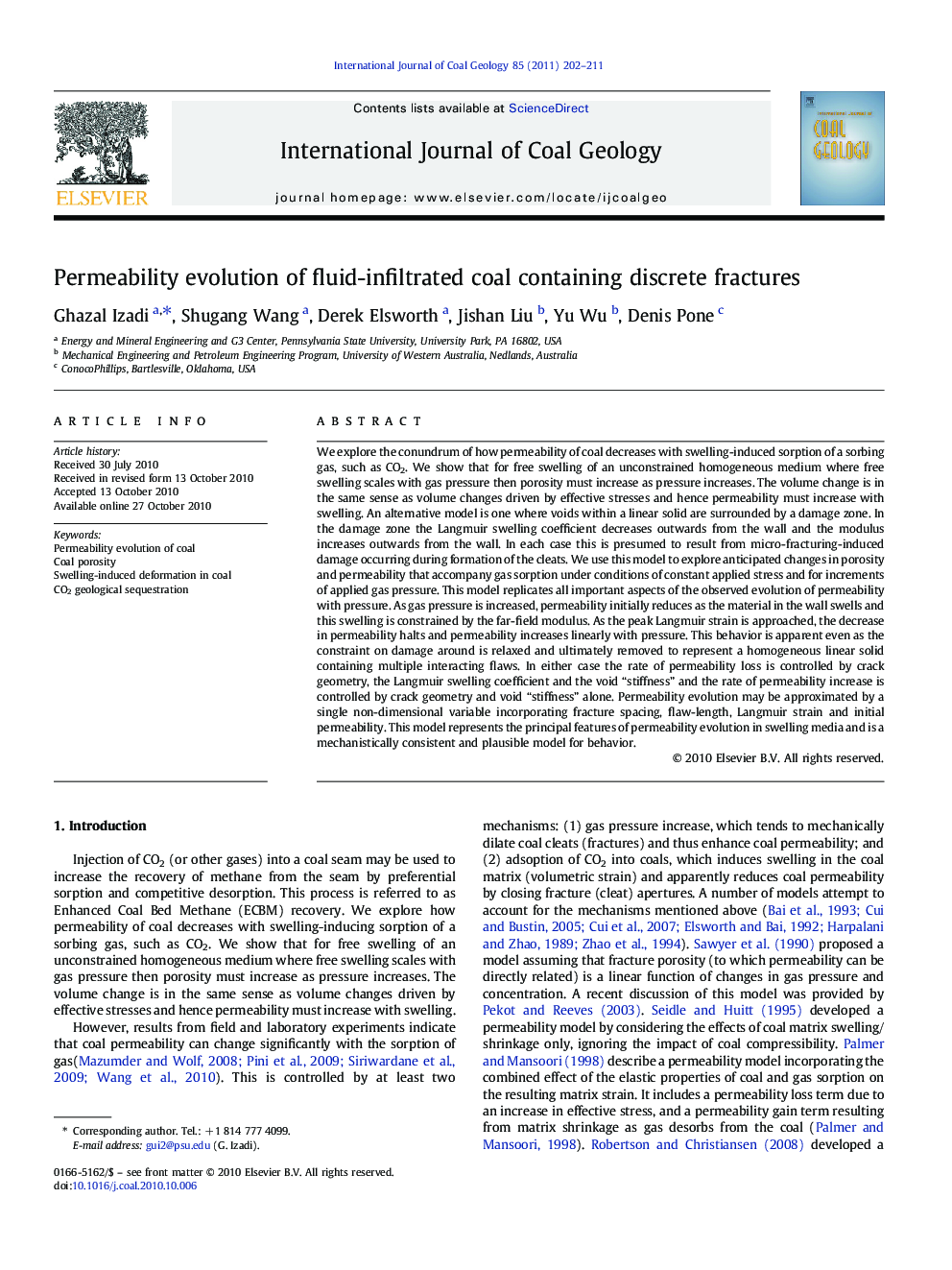| Article ID | Journal | Published Year | Pages | File Type |
|---|---|---|---|---|
| 1753584 | International Journal of Coal Geology | 2011 | 10 Pages |
We explore the conundrum of how permeability of coal decreases with swelling-induced sorption of a sorbing gas, such as CO2. We show that for free swelling of an unconstrained homogeneous medium where free swelling scales with gas pressure then porosity must increase as pressure increases. The volume change is in the same sense as volume changes driven by effective stresses and hence permeability must increase with swelling. An alternative model is one where voids within a linear solid are surrounded by a damage zone. In the damage zone the Langmuir swelling coefficient decreases outwards from the wall and the modulus increases outwards from the wall. In each case this is presumed to result from micro-fracturing-induced damage occurring during formation of the cleats. We use this model to explore anticipated changes in porosity and permeability that accompany gas sorption under conditions of constant applied stress and for increments of applied gas pressure. This model replicates all important aspects of the observed evolution of permeability with pressure. As gas pressure is increased, permeability initially reduces as the material in the wall swells and this swelling is constrained by the far-field modulus. As the peak Langmuir strain is approached, the decrease in permeability halts and permeability increases linearly with pressure. This behavior is apparent even as the constraint on damage around is relaxed and ultimately removed to represent a homogeneous linear solid containing multiple interacting flaws. In either case the rate of permeability loss is controlled by crack geometry, the Langmuir swelling coefficient and the void “stiffness” and the rate of permeability increase is controlled by crack geometry and void “stiffness” alone. Permeability evolution may be approximated by a single non-dimensional variable incorporating fracture spacing, flaw-length, Langmuir strain and initial permeability. This model represents the principal features of permeability evolution in swelling media and is a mechanistically consistent and plausible model for behavior.
Research Highlights► We explore why coal permeability decreases with swelling even when unconstrained. ► Fractures with connected bridges are essential to replicate permeability reduction. ► Zero-net-strain model replicates response. ► Conditioned by Langmuir strain and pressure and fracture stiffness and geometry.
